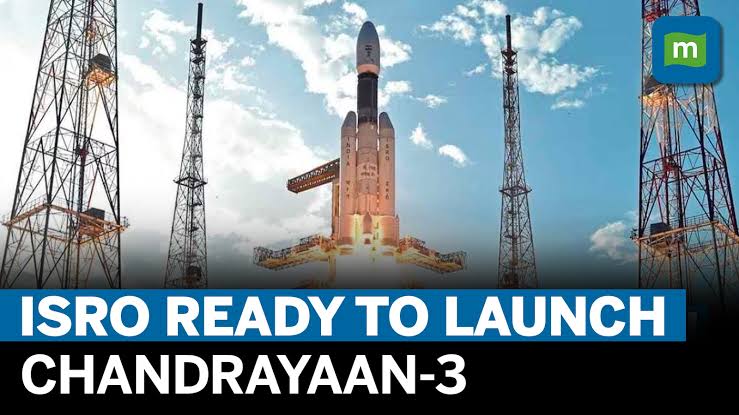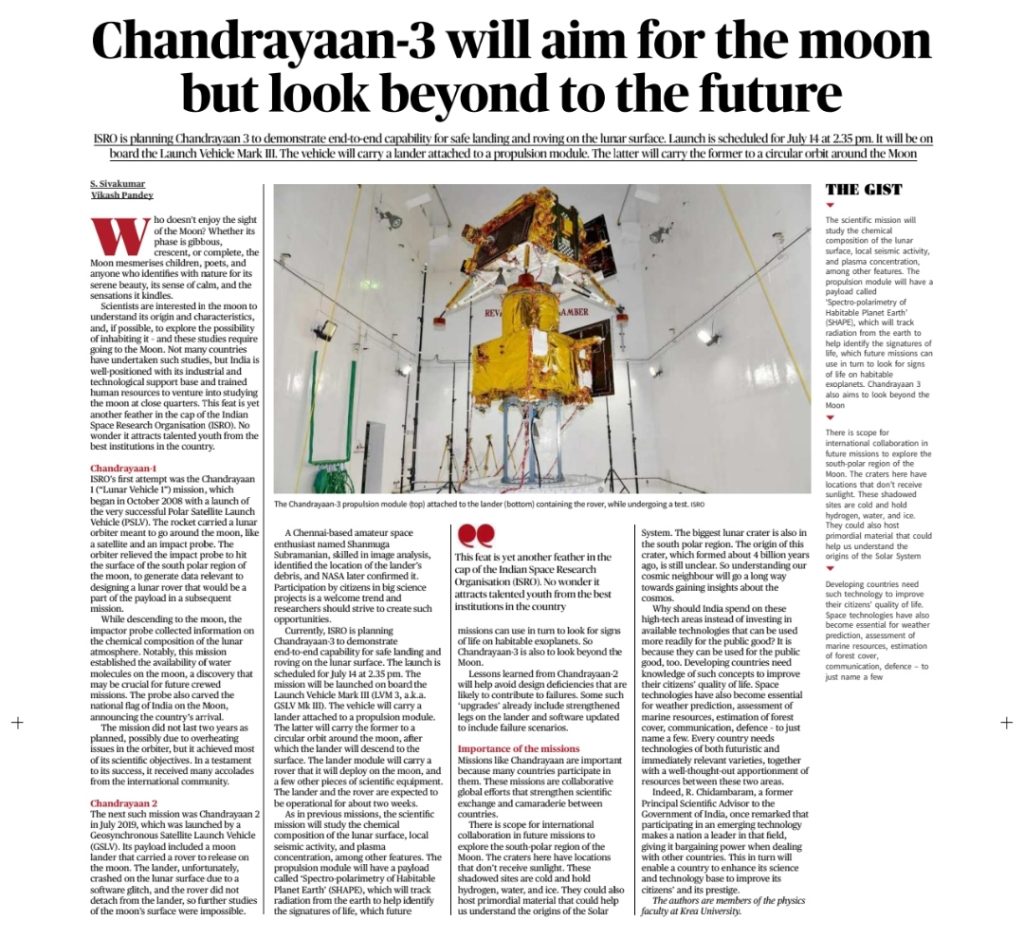Chandrayaan 3
India is all charged up to launch Chandrayaan 3 in 2022 as its fabrication has been delayed due to the COVID-19 pandemic. Jitendra Singh, India’s Union Minister of State for Space responded to the parliament writing that ISRO is expected to launch the spacecraft in the third quarter of this year.
ISRO achieved great success with Chandrayaan 1 lunar orbiter which carried out high-resolution remote sensing of the Moon. In addition, ‘Moon Impact Probe’, a space capsule, successfully detected the existence of water vapour in the Moon. However, a crash landing of Chandrayaan 2 led ISRO to initiate a 3rd phase of the Chandrayaan program.
What is Chandrayaan 3?
Chandrayaan 3 spacecraft is the 3rd lunar exploration expedition, outlined by the Indian Space Research Organisation (ISRO). ISRO planned this spacecraft to exhibit India’s soft landing proficiency on a stellar body. It will only consist of a rover and lander and will communicate to the earth via an orbiter from Chandrayaan 2.
This ambitious mission encompasses several configurations, integration and cognisance. Additionally, there are several other detailed testing remaining to evaluate the spacecraft.

Background of Chandrayaan 3 Mission
ISRO designed the Chandrayaan 2 mission to send the Chandrayaan 2 spacecraft with an orbiter, rover and lander. They launched this spacecraft on-board the GSLV-Mk 3, one of the mightiest geosynchronous vehicles.
The lander Vikram’s failure on a soft landing resulted in hindering the attempt of rover Pragyaan to travel on the Moon. This led to endeavouring another mission to showcase India’s landing capabilities required for the Lunar Polar Exploration Mission.
This Mission to Moon’s south pole is going to be in collaboration with Japan in 2024. While India is going to provide a lander, Japan will yield a rover and launcher.

Features of Chandrayaan 3 Spacecraft
- Chandrayaan 3 will take its flight into outer space with a rover and lander. It will not include any orbiter like Chandrayaan 2.
- India aims to examine the Moon’s surface, especially areas that have not been receiving sunlight in some billion years. Scientists and astronomers are suspecting the presence of ice and abundant mineral stocks in these darker parts of the lunar surface.
- In addition, this exploration will not limit to the surface but aim to study the sub-surface and exosphere.
- The rover of this spacecraft will communicate to earth via an orbiter taken from Chandrayaan 2.
- It will study the surface by taking images at a distance of 100km from the lunar orbit.
Design of Chandrayaan 3 Spacecraft
The lander of ISRO’s Chandrayaan 3 will be powered by 4 throttle-able engines. In addition, it will be endowed with a Laser Doppler Velocimeter (LDV).
Importance of Exploring the Moon for Scientists
- The Moon is the closest heavenly body to our planet to test space technologies for extensive space missions.
- It also acts as a promising cosmic body to explore and achieve a better understanding of extra-terrestrial territories.
- This encourages the advancement of technologies, inspire future scientists and promote international alliances.
- Moreover, it provides a connection to the history of the solar system and primitive earth.
Reason to Target Moon’s South Pole with Chandrayaan 3 Space Mission
- One key reason to target the Moon’s southern pole with Chandrayaan 3 is that it contains larger shadowed areas than the northern pole. Scientists believe that these areas on the lunar surface possibly have a permanent source of water.
- In addition, scientists also have a keen interest in the craters present in the southern pole. They believe these cold traps may contain mysterious fossil records of the early planetary system.
The COVID-19 pandemic and several phases of lockdown hindered multiple scientific projects of the Indian Space Research Organisation (ISRO). Along with Chandrayaan 3, the Gaganyaan, India’s 1st manned space mission has been delayed. Nevertheless, the spacecraft is now ready to travel to the Moon at the end of 2022.





